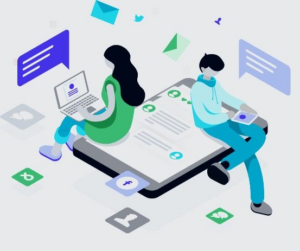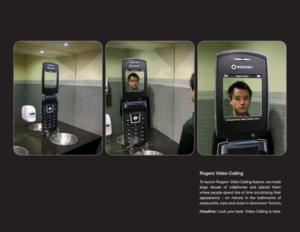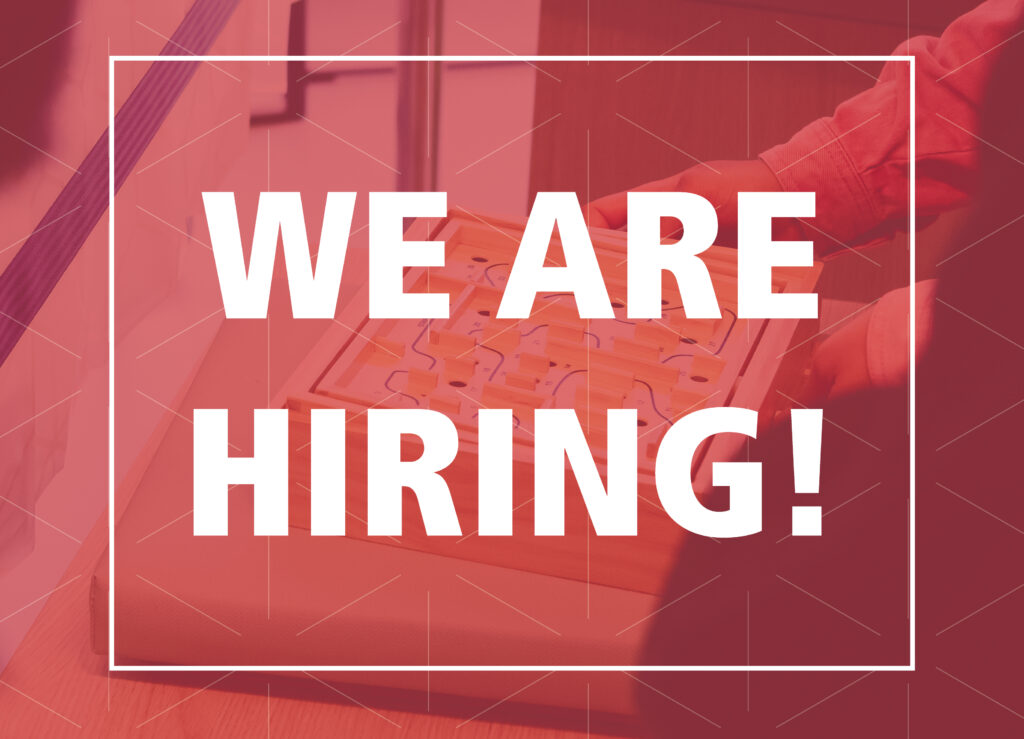Insight
Promoting athlete’s well-being through creating daily routines
Developing ideas and concepts to support data gathering toward student well-being
After comprehensive research and productive interviews with students of ALO in the first sprint, we focused on defining the direction of the project. The primary goal of the project as defined during the first sprint was to design a communication tool aimed at enhancing mutual understanding and self-development. However, after a translation session with our track ambassador, Ger Janssen, head of Digital Twin at Philips, we decided to include an approach to help our clients gather relevant data. We realized that the data we had, gathered from two surveys and from Brainfirst games played by students, were unrelated and no meaningful correlation could be drawn between them.
Our methodology then was to develop different points of interaction to gather relevant data systematically, which can be correlated to the existing data to help draw meaningful insights.
With this in mind, we dived into the brainstorming and ideation phase using design thinking methods such as storyboarding, mind mapping, and concept development. Our ultimate goal was to come up with concepts and ideas to help us gather relevant data for our clients, whilst promoting students’ emotional well-being and self-development. We believe that the more students are emotionally healthy and aware of themselves, the higher the chances of them excelling in school.
We came up with 5 concepts, each of them based on a different interaction, and highlighted each of their unique features, pros and cons, and value propositions. We also created mood boards to better visualize each of the proposals.
A detailed description of the concepts
Concept 1: Self-reflection chatbot
The first idea is to develop a chatbot that students can interact with to provide information about certain facilities of the school and also guide them through self-reflection regarding their emotional state in school. From our interaction with the students, we realized the students were not making use of the counseling services provided by the school and would rather choose to do nothing about their feelings. Research, however, suggests just a moment of reflection on one’s feelings can be the beginning of emotional healing.
The self-reflection chatbot seeks to guide students to personally reflect on their emotions. Students follow a storyline set by a chatbot, guiding their reflection upon the school journey and their emotional state. With this, we believe we are giving students introspective moments, gathering data, promoting students’ health through their daily routines such as the use of their mobile phones, and giving them opportunities for personal development. By helping students with their emotional development, we foresee a direct impact on the performance of students in their academics. The data gathered from the use of the chatbot will provide information on the collective emotional state of the students in the school at different times in the academic calendar. The administrators at HvA can then take action based on this feedback.

Concept 2: Mirror information
The mirror information concept seeks to provide general information about the school to students, and also give them a grasp of the collective feelings of other students. Students get instant feedback on the emotional state of their peers during certain periods of the academic year by scanning a code and giving their emotional state by answering predefined questions.
We believe the washrooms provide the needed privacy and a relaxing atmosphere for students to reflect and share their feelings. The idea is to let students know they might not be alone in whatever situation they find themselves in. Knowing that they are not alone will help relieve some pressure off them and connect with their peers, creating a sense of community in the school. At the same time, they receive suggestions on where to find certain essential facilities of the school that might help them in their situation.
This concept utilizes the mirrors in the washrooms of the school. QR codes/NFC tags will be placed on mirrors in the toilet, which will provide information about certain important facilities of the school when scanned/tapped. The tag/code will also provide the option for students to share and then see the general feeling of students on campus.
For the school, this becomes a very effective way to gather data on the emotional state of the students. We intend to present to students, questions which shows their mental state during periods that are known to be stressful, such as during examination period and internships. The data gathered can therefore be used to correlate with data gathered from student surveys during the admission period, where they answered questions on their readiness for such stressful moments based on their experiences.


Concept 3: Future-self
This concept provides an interactive experience for incoming students to project themselves into their future selves. We discovered that there is often a mismatch between the expectations and realities about studying at ALO on the part of students. This concept, therefore, seeks to create a virtual environment where students go through different events that represent different points during the ALO roadmap. The key moments may include lectures, practical lessons, examinations, and final graduation. After going through this virtual experience, we expect students to be able to manage their expectations and be more prepared to go through the ALO curriculum successfully. Another feature of this concept is students take a picture and inscribe a motivational message on it, which will be sent to their mail at the end of the semester to serve as a motivation to them. This picture is to remind them of the virtual experience and what they said to themselves as motivation.

Concept 4: Self-reflection Telephone booth
This idea is the telephone booth version of the self-reflection chatbot. The presence of the booth on the campus is to raise curiosity in students for them to try it out. It also serves as an option for the minority who don’t fancy the use of smartphones much. The self-reflection booth will be in the form of an audio game composed of a telephone and an answering machine. Students can choose between different pre-defined options that will make them consider their skills, feelings, and school journey. The telephone booth will be located at vantage points within the campus to make it visible and still offer some level of privacy.
We envision that by reflecting on their skills and emotions, through the guidance of carefully crafted questionnaires presented by the telephone booth, students get to detect possible problems and seek help if they need academic or emotional support. The device will collect the answers from the students to survey their general emotional and developmental state. Again, the booth will present questions that show the mental state of students during periods that are known to be stressful, such as during the examination period and internships. The data gathered can therefore be used to correlate with data gathered from students’ surveys during the admission period, where they answered questions on their readiness for such stressful moments based on their experiences.

Concept 5: Emotional Support Gym
We envisage this concept to use the sports facilities of the school such as the colorful gym and training rooms to give students a chance to experience their emotions, natural energy and have a relief moment. Appropriate installations will be made in such facilities, possibly after school hours, creating the needed ambiance for students. Students will be guided through simple questions to think about the moment that they had a disturbing emotional feeling and transfer that energy into an activity in this emotional support gym. We expect the ambiance in the room and the reflection period to start emotional healing in the students.
Data will be gathered from the simple questions students answer, which will inform the school about the emotional state of the student. The questions will be organized in a way to help gather data that can be correlated with the survey data gathered from students during the admission period.

The Digital Platform: an Inside Out
We came up with a high-level view that illustrates the digital platform architecture, systematically connecting all data coming from the implementation of the concepts and interactions into a meaningful story for the HvA about its students. It shows how data is gathered into a central Data Storage and how both sides of the platform (teachers and students) interact with data. A personal development platform is positioned as a sub-system that also has interaction with the central Data Storage.
The architecture consists of five fundamental layers:
- The first layer is the Data Gathering Layer. Data from different resources like wearable devices (IoT), online assessment games, and online surveys are collected.
- The Data Integration Layer is designed to integrate and store the collected data from the Data Gathering Layer into data lakes and data warehouses.
- Since the process of data gathering could be continual or could be discrete, we have the third layer, which is responsible for the process management. For instance, receiving data from wearable devices to track the lifestyle is a continuous one, while mental assessment using an online assessment game is an activity that could be run at the start (s) and end (e) of each semester. This procedure is managed under the Process Layer.
- The lower layer of the platform is the fourth layer, the Personal Development Plan (PDP) subsystem, which includes 4 main components and has its inputs and outputs, and has a direct interaction with the Data Layer.
- The fifth layer is the Data Presentation layer. Both students and teachers can interact with the platform using the Data Visualization layers features, which include reports and dashboards for the teachers and a Personal Digital Twin for the students.
Review with clients
We had a review with our clients at the end of the sprint to present the five concepts and gather feedback from them. We shared a detailed description of each concept with images and examples and allowed our clients to comment on each. Our clients also got the opportunity to look at the infographic, which gave them an idea of the general overview of how the entire platform will look like.
The key feedback we received from them included taking a more critical look at the privacy issues related to the concepts, how to get students to use the platform, and taking into consideration the available budget. Our clients prefer our final product to be accessible both virtually and on-campus. The individual features of the concepts are impressive, and they look forward to the final product.
What Next?
After the productive discussions with our clients, we go into sprint 3 looking at how to merge these concepts and come up with an MVP. The key factors to consider include:
- Making it attractive and fun to students.
- Developing something that can be used both virtually and physically.
- Thinking about how applicable it is at different campuses.
- Considering the budget available.
Written by Kofi Bentil; I am a data enthusiast passionate about deriving insight from large data sets. Using spreadsheets, python and other related tools, I look for patterns in data and how businesses can take advantage of these patterns to improve productivity. I believe every data set tells a story and shouldn’t be ignored. In my current role at DSS, I analyzed the data received from our client, to get a fair idea of the end-users of our product – the students.
The Team:
- Nikta: Tech-savvy product manager interested in human-centered design and innovative high-tech companies.
- Reza: A solution architect.
- Jin: New media student who is in media art, music culture, and every creative industry.
- Kofi: Geological Engineer and data enthusiast, focused on analyzing data sets to discover trends.
*Coach: Mariana Pinheiro – Industrial Designer.


